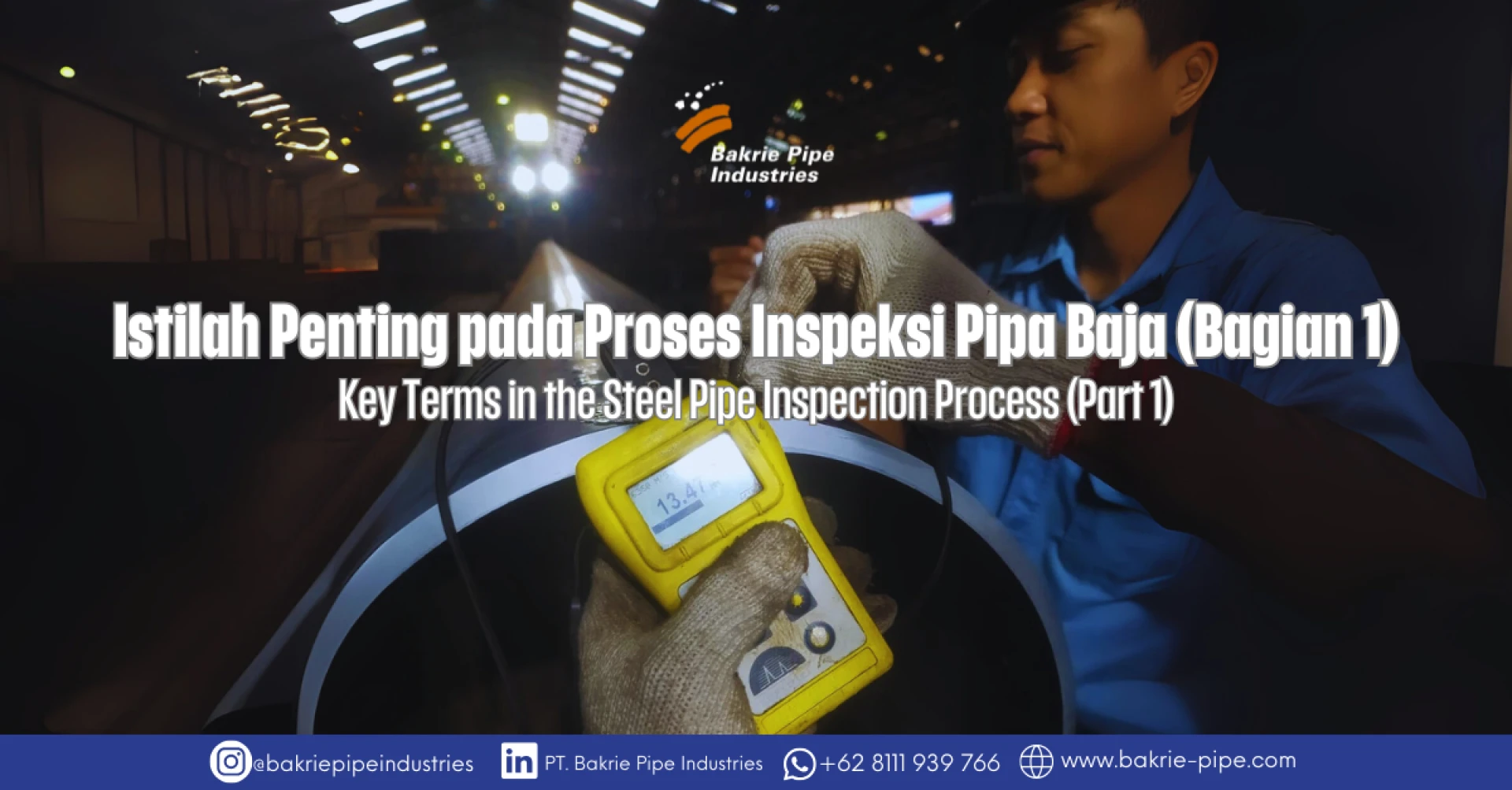Hello Pipe Enthusiasts!
For ensuring the integrity and safety of pipe installations, both during production, shipping, and operation, various inspection methods are applied. Each method has specific terms that must be understood by Engineers, Quality Control (QC), Quality Assurance (QA) or field technicians. Below is a summary of key terms in the pipe inspection process.
1. MPS (Manufacturing Procedure Specification)
MPS is a document that details step by step the manufacturing process of steel pipes, from raw material preparation to the finished product. Inside it there is the sequence of welding manufacturing processes (ERW/HFW, LSAW, HSAW), parameters, tests carried out, tolerances, quality control at each stage, acceptance criteria as well as standard references such as API 5L, SNI 0039 or ASTM, as technical and quality references.
2. ITP (Inspection and Test Plan)
ITP is a written plan that outlines all inspection and testing activities for every stage of steel pipe fabrication and installation. In the ITP, there are usually inspection activities, inspection methods, supervision, acceptance criteria, references, verification documents and others.
ITP aligns the requirements of MPS, WPS (Welding Procedure Specification), and standards such as SNI 0039:2025, ensuring QA/QC engineers can monitor, document, and give approval before the process continues.
3. Inspection Activity
Inspection Activity is the practical execution of the points in the ITP carried out by inspectors or QA/QC engineers. This activity includes verification of documents (MPS, WPS, ITP) before product handover. Each result is recorded in a form or official report for audit trail and quality trend analysis.
4. Visual Inspection or Visual and Dimensional Inspection
The first inspection performed during the steel pipe manufacturing process is Visual Inspection or Visual and Dimensional Inspection, this inspection process includes roundness, straightness, internal and external weld results, squareness, pipe bevel results, thickness, length and many others.
In Visual and Dimensional Inspection testing, instruments used include tape measure, roll meter, sigmat, angle gauge, thickness meter, root gauge, circumferential, square ruler, feeler gauge, vernier calipers and others.
Visual and Dimensional Inspection testing not only relates to the steel pipe product, but also to the steel pipe material, namely Hot Rolled Coil (HRC) and Hot Rolled Plate (HRP).
5. Hydrostatic Test
Hydrostatic Test is the water pressure test on pipes to verify tightness and structural strength before use. In its implementation, the steel pipe is filled completely with clean water and then subjected to test pressure according to each product specification standard reference (usually in bar, MPa or psi) then the test pressure also has a holding time, while observing whether there is a pressure drop or leakage, as well as checking that the pipe elongation does not exceed tolerance limits.
The test is considered successful if there is no leakage, permanent deformation, or significant pressure drop, ensuring that the pipe is ready to operate safely in the field.
6. Flattening Test
The Flattening Test is a destructive testing method used to evaluate the ductility and structural integrity of weld seams and pipe walls. A cross-sectional sample is compressed between two flat plates until a specified distance is reached. The objective is to ensure that no weld opening, cracking, lamination, or signs of burnt metal occur during the flattening process
Further Discussion
Thus the Key Terms in the Pipe Inspection Process (Part 1), which are the key in the steel pipe inspection process at PT. Bakrie Pipe Industries. By understanding MPS, ITP, up to Hydrostatic Test, we ensure every pipe produced is ready to operate safely and in accordance with quality standards.
Leave a comment if you have questions or field experience you want to share. Don’t miss the next updates at #BPIPipeInsights!
